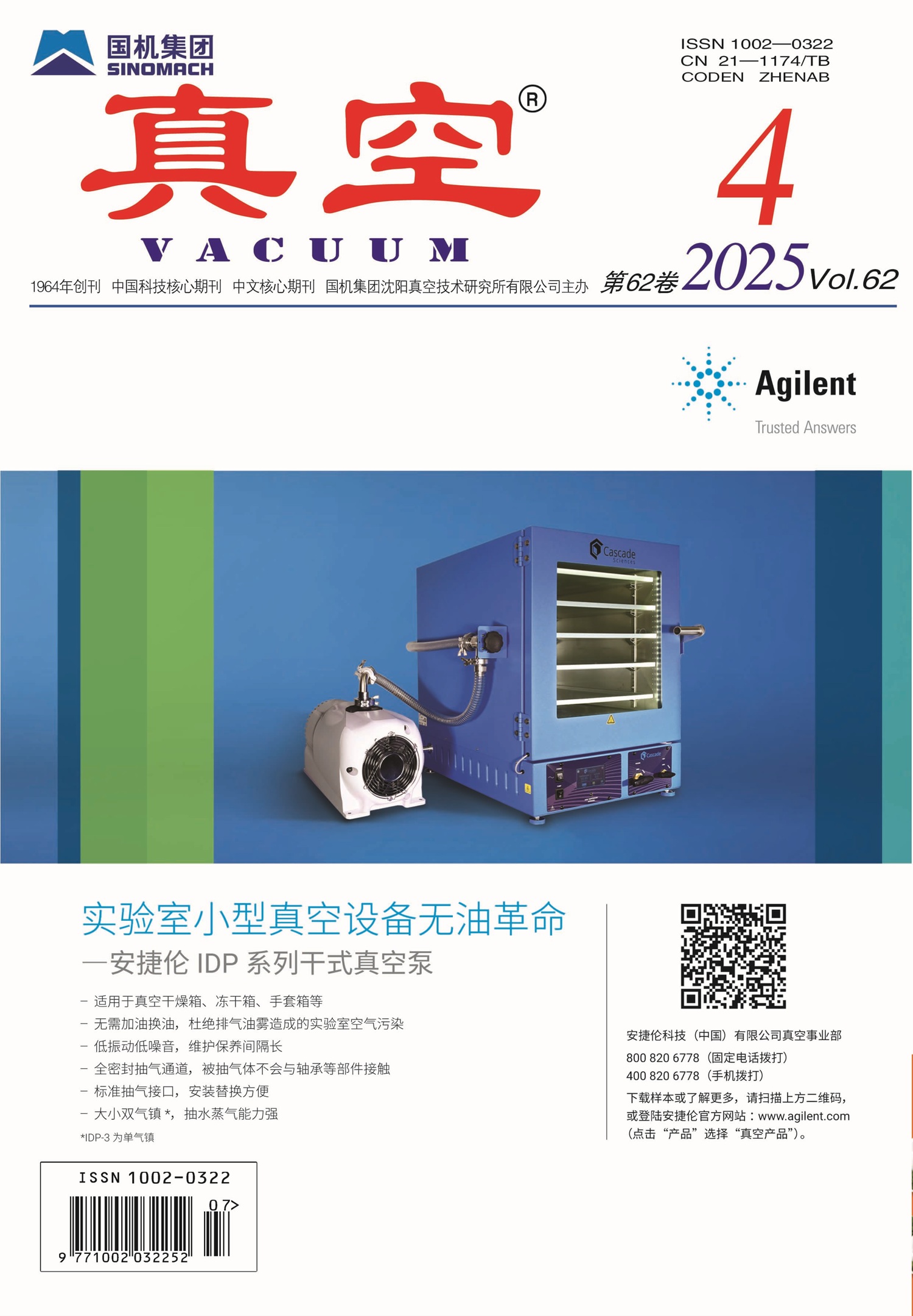|
|
Effect of Modulation Structure on Properties of Cr-CrN-Cr-CrAlN Multilayer Films
CHEN Qu-ping, LIN Song-sheng, LIU Ling-yun, GUO Chao-qian, SHI Qian, WANG Yun-cheng, LÜ Liang, LIU Ruo-yu, YI Chu-shan
VACUUM. 2022, 59 (3):
29-34.
DOI: 10.13385/j.cnki.vacuum.2022.03.07
In order to improve the service performance of titanium alloy, multilayer films with different RCr-CrN:RCr-CrAlN modulation ratio were prepared on TC4 titanium alloy by vacuum cathodic arc ion plating. Scanning electron microscope(SEM), X-ray diffraction (XRD), microhardness tester, scratch tester, stress tester and sand erosion tester were used to detect and analyze the cross-section morphology, structure, thickness, hardness, adhesion, residual stress and sand erosion resistance of the multilayer films. The results show that the thickness of multilayer films is 7-8μm, the transition layer is about 1.5 μm, and the thickness of single cycle is 150-200nm. All the multilayer films exhibit (200) preferred growth face centered cubic structure. With the increase of the proportion of Cr-CrAlN layer, the hardness, residual stress and adhesion of the film increase accordingly. The sand erosion resistance of multilayer films with different modulation ratios at 90° angle of attack is more than 3 times that of TC4 substrate before they are completely damaged, and at 30° angle of attack, the sand erosion resistance of multilayer films is about 8 times that of TC4 substrate. When the modulation ratio of RCr-CrN:RCr-CrAlN is 1∶2, the multilayer films have the best comprehensive properties.
References |
Related Articles |
Metrics
|

 Table of Content
Table of Content
 Table of Content
Table of Content